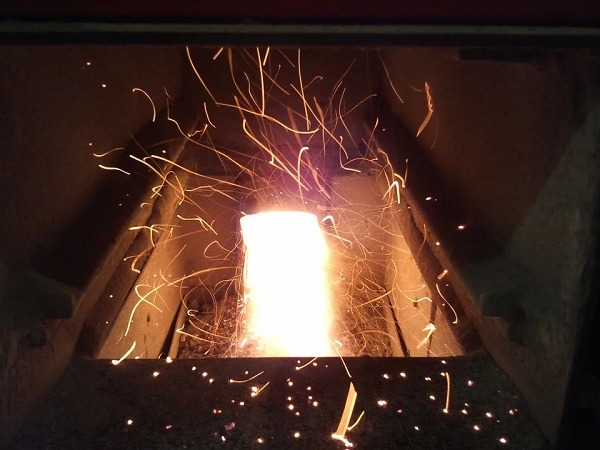There are various reasons why people choose to live off-the-grid. Some are doing it because they want to save money. Others, on the other hand, think that living off-the-grid is the more practical and secure way of living in case the power goes out. Either way, living off-the-grid can provide a lot of advantages, so it is definitely worth trying.
However, most conventional homes today are not designed or equipped for off-the-grid living, so adapting to it can be quite challenging, not to mention expensive. However, living off-the-grid can be rewarding for those who choose to go with this lifestyle.
The most common ways of heating a home include electricity, gas, oil, and wood. But when you’re living off-grid, the continuous supply of electricity may be out of the question, unless you have a solid and reliable solar power system. But there are other alternative ways to keep yourself warm when temperatures drop outside, without the help of electricity.
1) Corn stoves or pellet stoves for corn burning
Just think of how your ancestors kept themselves warm during those unforgivingly frigid seasons. If your parents or grandparents were alive during the Great Depression, they would have probably used a corn stove or pellet stove to keep themselves warm.
Corn stoves or pellet stoves automatically feed the burn with the precise amount of fuel needed to produce heat at a pre-set temperature. As a result, you see no waste. Plus, compared to wood stoves, corn stoves or pellet stoves are much more efficient to keep yourselves warm.
And the best benefit of all? Corn stoves or pellet stoves are a lot more cost-effective and energy-efficient than wood or coal. It’s a little wonder that they’re making a comeback.
2) Masonry heaters
Masonry heaters are quite an old design that also makes a comeback in modern homes. A masonry heater is constructed of brick, soapstone, tile, natural stone, stucco, or a combination of these, instead of cast iron or steel. It consists of a firebox and channels used for distributing heat.
Think of the masonry heater as your indoor sun. At the center of the masonry heater is a firebox. When the firebox is loaded with enough amount of firewood, it burns hot, reaching temperatures of up to 1,500 degrees Fahrenheit and above.
As the fire burns, the flue gases run through a maze of flue channels inside the masonry heater’s core and are absorbed by its thermal mass. This heat is retained in the mass long after the fire goes out. Then heat gently radiates out to your home, providing warmth for 12 hours or more.
Unlike the sun, the masonry heater doesn’t have to burn constantly to retain heat. In a lot of cases, the masonry heater needs to be heated once or twice a day. Unlike other wood or gas system available, the masonry heater is safe to the touch. It also doesn’t create hazardous by-products such as tar or creosote. The masonry heater is energy-efficient and provides consistent and steady heat, that is why more people living off-the-grid are switching to it.
3) Wood furnaces
A wood furnace, or simply a furnace, is a type of heating system which blows heated air through channels or ducts to warm air to rooms throughout the house by way of air registers or grills. A furnace is usually run by electricity. However, it can also be run by fuel, natural gas or oil, which also makes an ideal option for off-the-grid living.
The majority of American households depend on furnaces for central heating, and the market for them is ever-expanding.
4) Boilers
Boilers are devices that distribute heat in hot water, which gives up heat as it passes through radiators or other devices to warm a room throughout the house.
If you like the idea of a fireplace or woodstove but otherwise want the convenience of a complete home heating system, you may want to consider boilers or wood furnaces (mentioned earlier). Like a wood furnace, a boiler can also be retrofitted to an existing home. Still, it’s better that you should your research first before considering it. Boilers are available in both indoor and outdoor units.
If your home does not have a central heating & boiler system you could qualify for a grant to cover the full cost of installing this in your home. To find out more on how to qualify read this handy guide on how to qualify for a central heating grant.
5) Solar heaters
A solar heater may be the cleanest and safest way of delivering warmth to your off-grid home. But depending on where you live, it is rather a supplemental heating source than the main heating source.
One of the most popular forms is the solar window box. It is simply constructed of an air-tight box made of translucent material, which catches heat from the sun and distributes it throughout the house. There are affordable, ready-to-use commercial units available, although you can also make a DIY version of it. You can rely on good tutorials and videos online to make your own solar window box.
